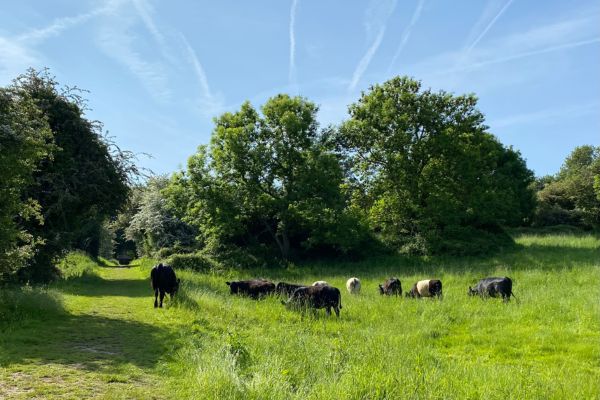Councillor Anna Railton, Cabinet Member for Zero Carbon Oxford and Climate Justice, on how we are supporting biodiversity in our parks and green spaces.
Interesting things have been happening in various corners of Oxford’s parks. Perhaps you’ve noticed more strips of wildflowers, longer grass or community woodlands? This is all part of a move to boost biodiversity in Oxford’s parks and green spaces.
One size does not fit all
Oxford has a rich diversity of sites, such as Port Meadow with its 1000 years of grazing, Shotover with its mix of ancient trees interspersed with heather, the hugely important Lye Valley with its internationally rare fen habitat. These sites are remnants of wider habitats.
But we also focus on creating new. Many of the sites that we treasure in Oxford are in fact former tips or industrial sites. These sites fortunately have brilliant “Friends of” groups that have transformed these into some of the most diverse wildlife sites in Oxford.
At this time of year we are planning the work over the next few months to conserve and enhance lots of the meadow sites around Oxford.

In Port Meadow we are working to conserve Creeping Marshwort where you need to replicate constant grazing, keeping the surrounding vegetation very short. Meanwhile swathes of volunteers in Lye Valley are again replicating grazing by large herbivores - but this time with scythes to keep the reeds back to allow more variety to flourish.
In Deans Ham, a flood meadow next to Hinksey Park, different parts get different cutting regimes depending on what’s there already - with regions with more rank grasses getting more cuts at different times of year to the more biodiverse patches.
For the better patches, at the end of July, there will be two passes of the mower - one high one to collect all the seed heads followed by a low cut two weeks later to remove the hay. There are often a couple of passes to get down to the soil. The pre-collected seed heads are then spread over the whole site ready for next year.
Timing can also be different for different sites. In the floodplain south of Cutteslowe park, the “back field”, Meadowsweet is dominant and is best knocked back in June. This site is part of a floodplain restoration project in collaboration with the freshwater habitat trust - the hope is this reclaimed agricultural land will both be host to more species and be a more robust water sink when the waters of the Cherwell inevitably rise.
A few hundred metres away, between the sports pitches and the duck pond is a promising meadow area that is being increased in size and biodiversity each year. This is cut and collected in September (with the hay feeding local horses), followed by a chain harrow and scattering yellow rattle seeds. This builds on the excellent work of Judy Webb on the neighbouring rest harrow meadow named after one of the plants that Judy has done so much to conserve.
In both Cutteslowe sites you can see the transition between one, two, three+ years of “cut and collect”. On the back field, the density of Meadowsweet visibly drops in each successive section and more delicate plants start to fight their way through. After five years the density will be low enough that a seed source can be introduced and less rambunctious species can be reintroduced.
There are challenges - it takes depth of expertise to know how to manage these sites, both to work out the timing, where to cut, how much, at what height and with what machine (you use a very different mower to do sports pitches compared to managing a meadow, for example).
The machinery is expensive - we invested £90k in a new cut and collect mower last year - and disposing of green waste is a close second. An added bonus of cut and collect is it reduces the density and thus the volume of greenery that needs to be disposed of each year.
This is also being done alongside the work of the parks team, be it looking after 126 playgrounds, 150 sports pitches, 26 countryside sites.

